- Creates durable, reliable, highly conductive connections
- Volume resistivity: 0.0001 ohms·cm
- Typical trace width: 0.9 mm
- Dries to touch in minutes
- Adheres to plastics, epoxy, copper, aluminum, ceramics, wood, and most electronic substrates as well as ABS, PLA, and other 3D printing plastics

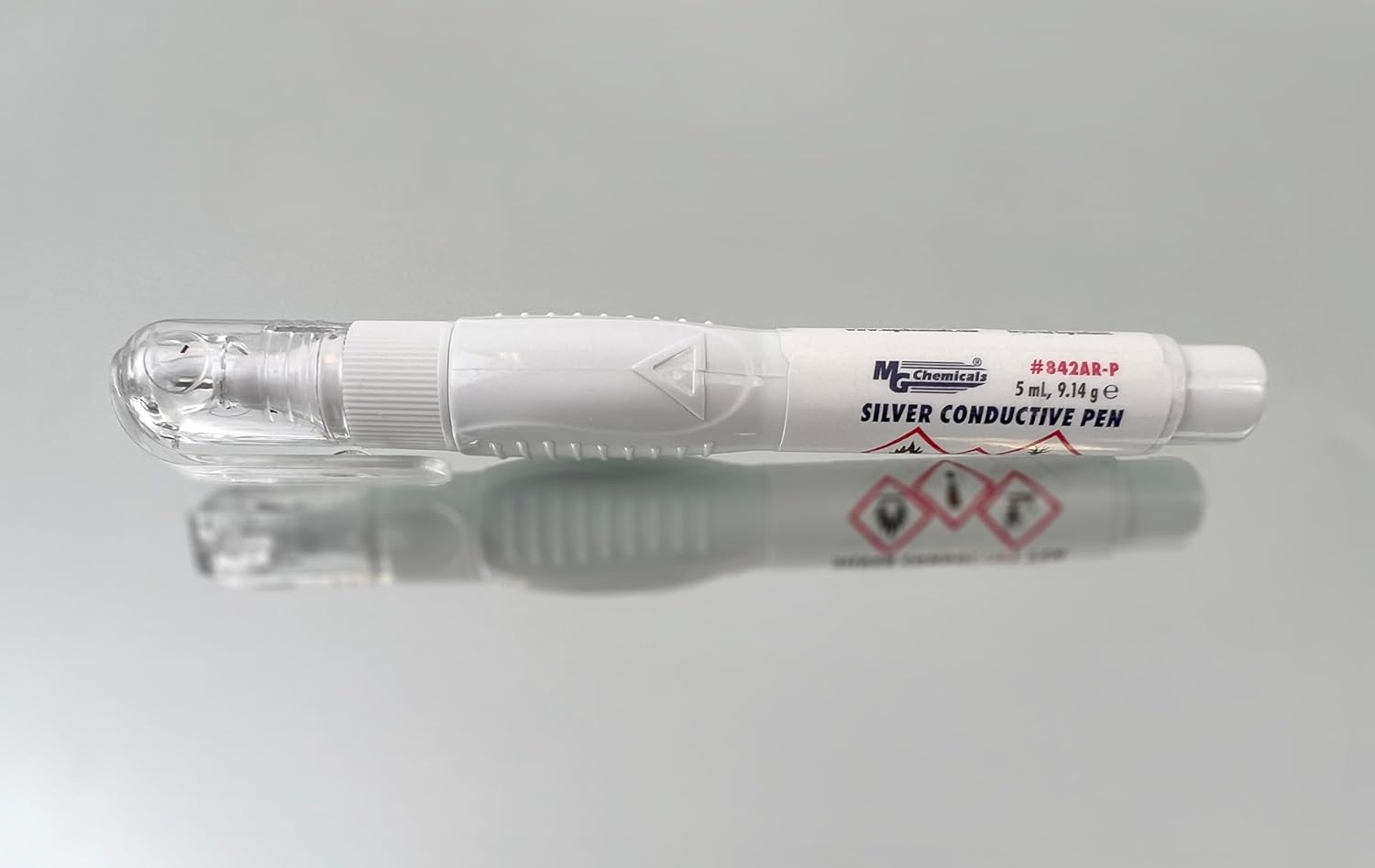
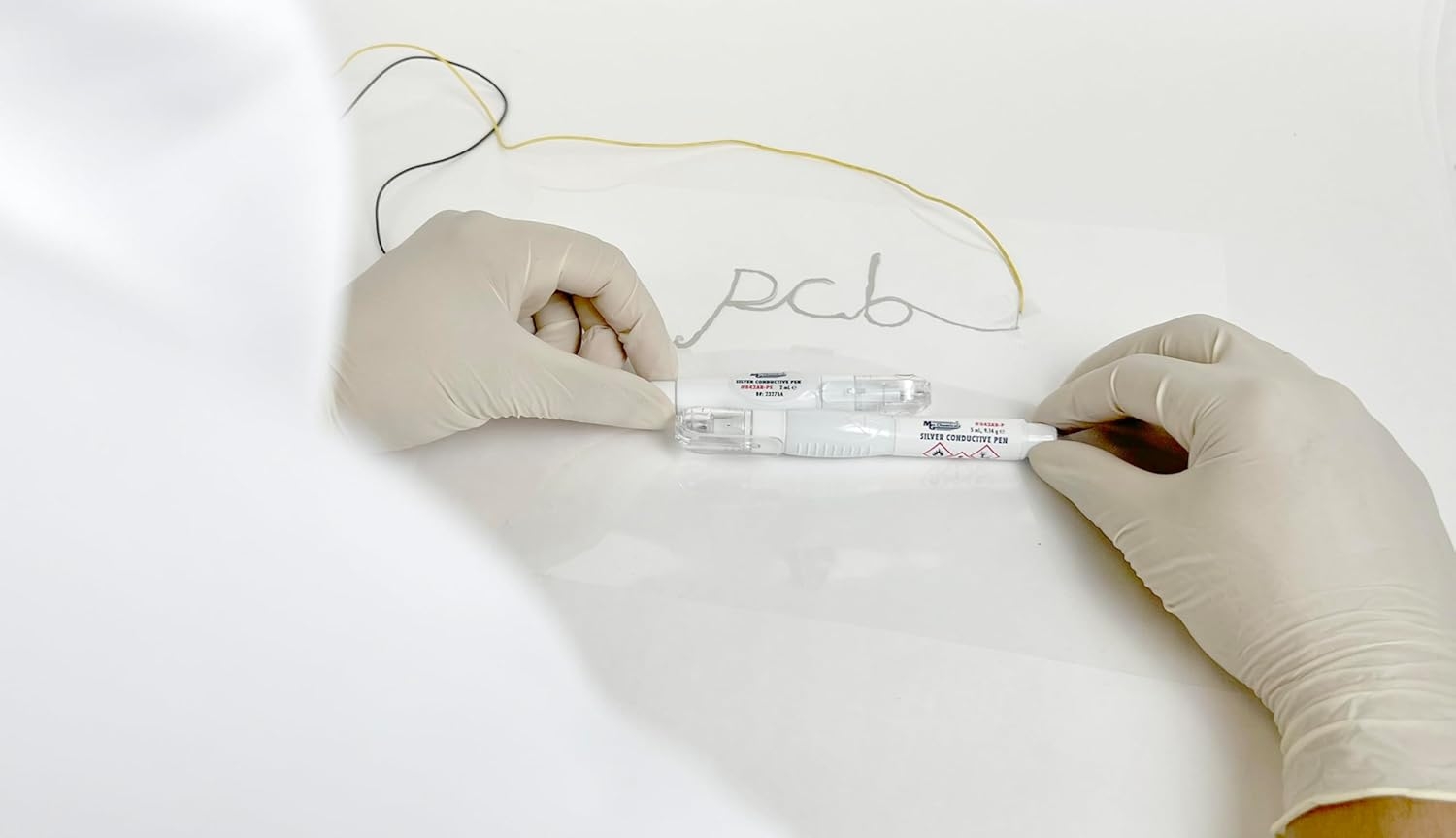
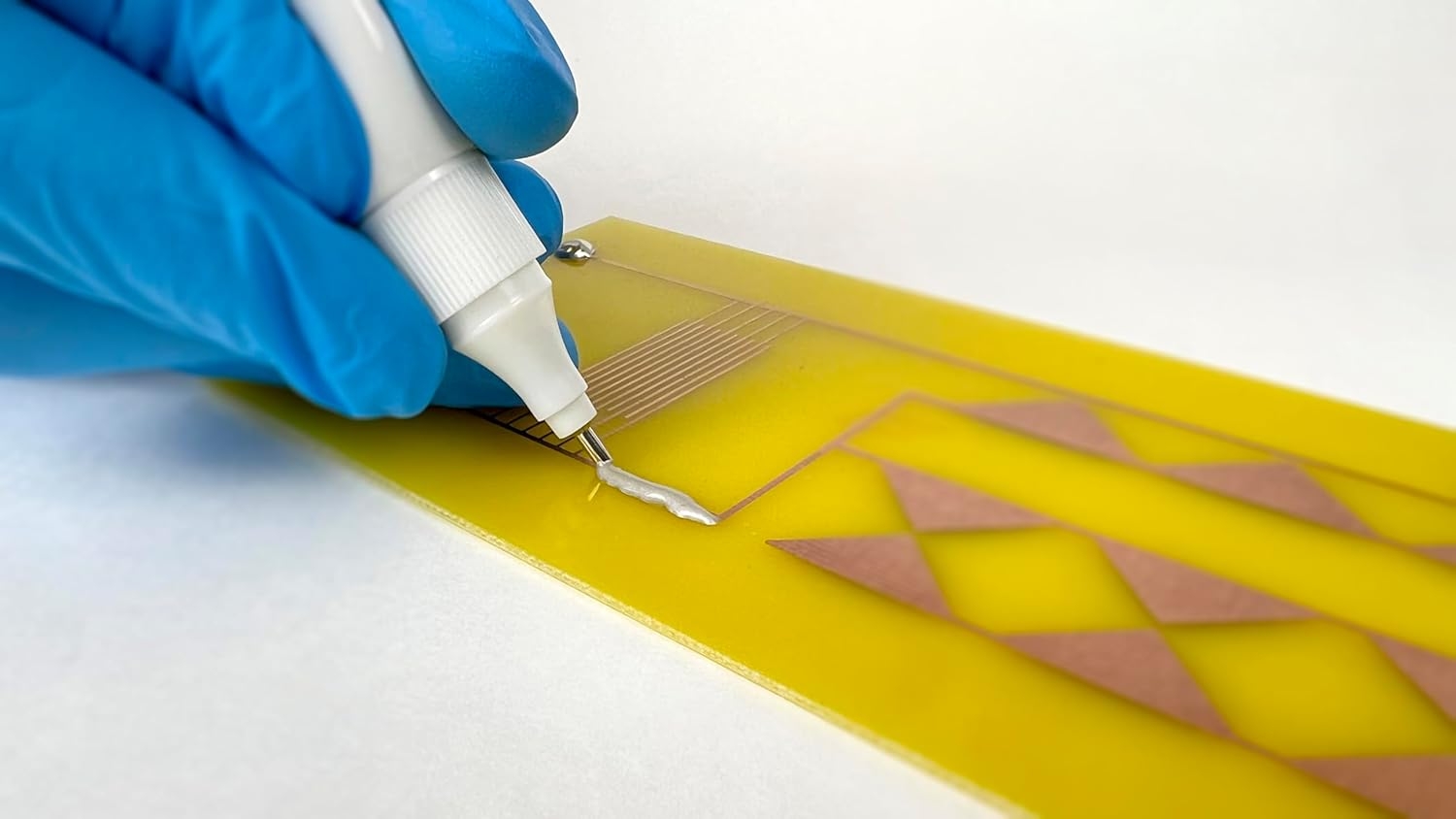


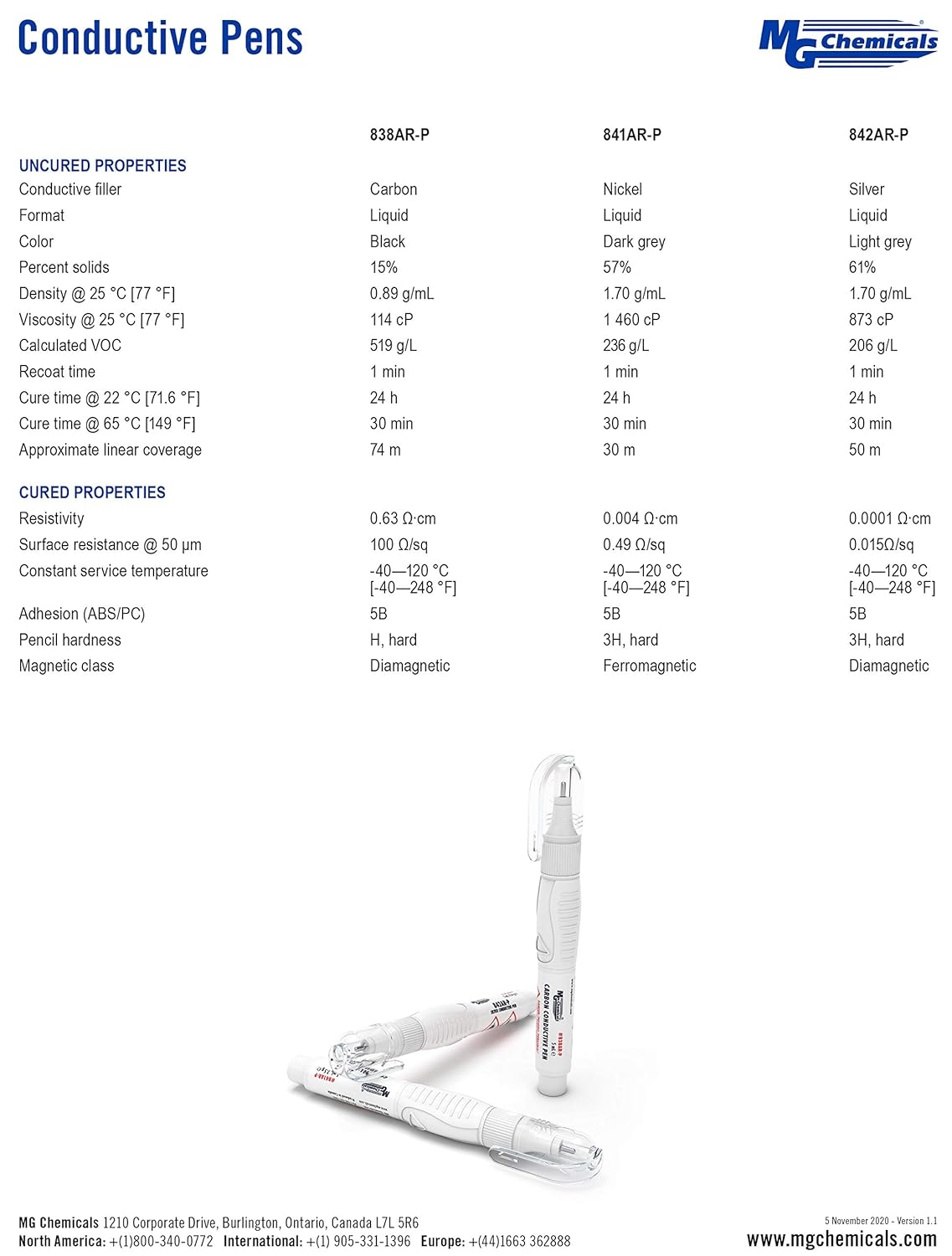
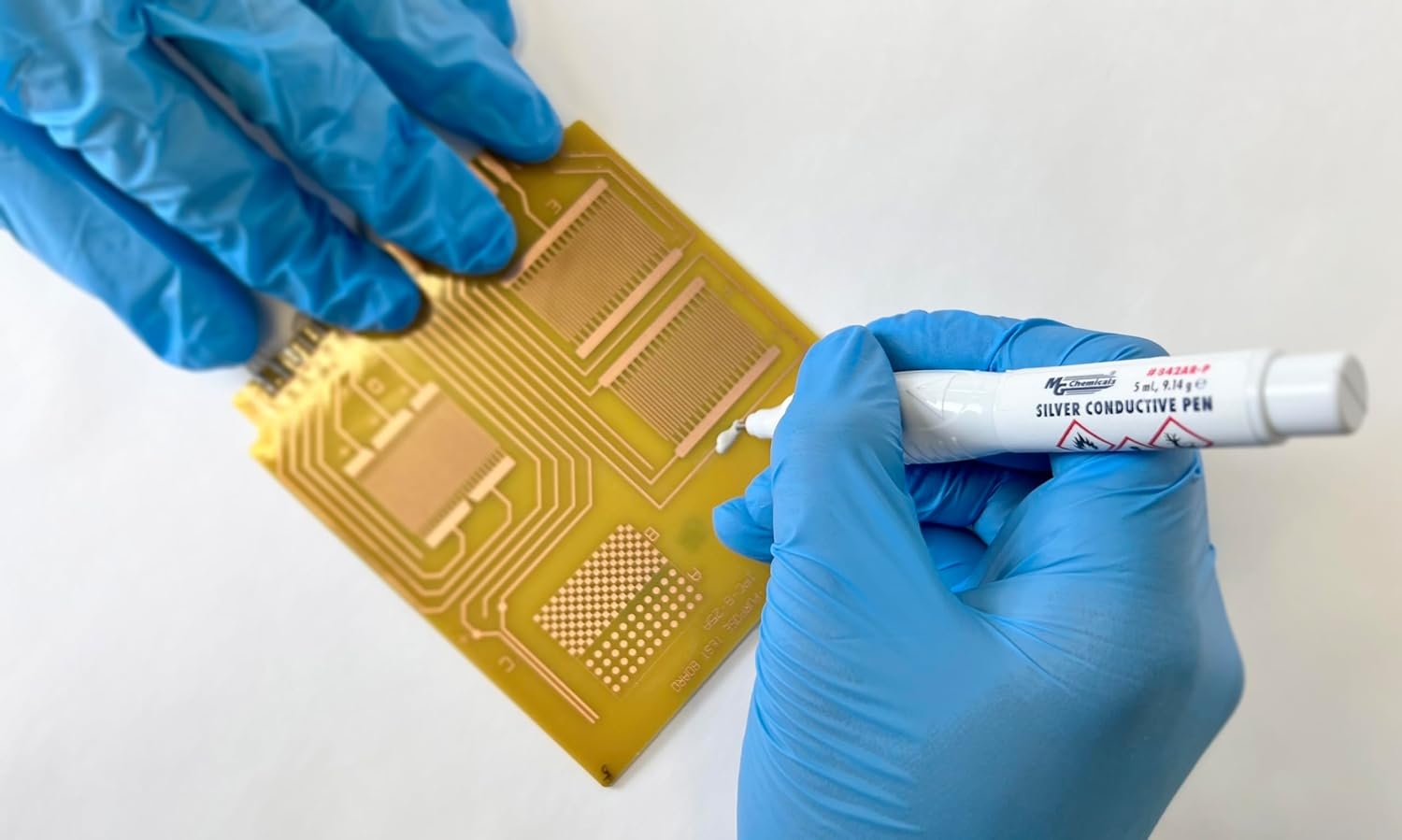
From the manufacturer



838AR-P – Carbon Conductive Pen
A circuit repair pen that dispenses acrylic lacquer pigmented with conductive carbon. The cured traces are durable and corrosion resistant, with fair conductivity. They adhere well to plastics and most electronics substrates. The valve tip opens when pressed against a surface, and the flow is controlled by squeezing the barrel. The product works best on a smooth, flat, hard surface, but the cured traces are highly flexible.
This circuit pen fixes damaged traces on keyboards, game controllers or remote controls. It is also useful for making small connections, such as jumpers and bridges. It is great for drawing resistors and can be used to increase the surface area of contacts by painting the area around them.

841AR-P – Nickel Conductive Pen
A circuit board trace repair pen that dispenses acrylic lacquer pigmented with conductive nickel flakes. The cured traces are durable, corrosion resistant, and have good conductivity. They adhere well to plastics and most electronics substrates. The valve tip opens when pressed against a surface, and the flow is controlled by squeezing the barrel. The product works best on a smooth, flat, hard surface, but the cured traces are highly flexible.
This circuit trace pen fixes damaged traces on keyboards, game controllers, remote controls, mixing boards, and PCBs. It also creates conductive traces for prototyping, hobbies, or maker projects. It is great for making small connections in or between traces, such as jumpers, through-holes, and bridges. It can also be used to increase the surface area of contacts by painting the areas around them.

842AR-P – Silver Conductive Pen
A silver conductive pen that dispenses acrylic lacquer pigmented with highly conductive silver flakes. The cured traces are durable, corrosion resistant, and highly conductive. They adhere well to plastics and most electronics substrates. The valve tip opens when pressed against a surface, and the flow is controlled by squeezing the barrel. The product works best on a smooth, flat, hard surface, but the cured circuits are highly flexible.
This conductive pen can draw electrical circuits for prototyping, hobbies, or maker projects. It can also repair damaged circuits on keyboards, game controllers, remote controls, mixing boards, and PCBs. It can also make small connections in or between circuits, such as jumpers, through-holes, and bridges. As well, it can be used to increase the surface areas of contacts by painting the area around them.

Carbon

Nickel

Silver

Product Description
The 842AR-P Silver conductive pen is an extremely conductive, fast drying paint in a convenient pen format. It quickly and easily creates durable, reliable, corrosion resistant, and highly conductive traces. It adheres to a wide variety of substrates. This product works best on smooth, flat, and hard surfaces. It has a Valve tip that opens when the pen is pressed against the surface to be drawn on and it has a soft tube, so the flow may be controlled by squeezing the center of the pen. Applications & usages it is used to draw traces on circuit boards or to create simple circuits on a variety of surfaces for prototyping, hobbies, or Maker projects. It can be used to repair damaged traces on keyboards, game controllers, remote controls, mixing boards, and pcb’s. Repaired devices may be returned to service in only 10 minutes. It is also great for making small connections in or between circuits such as jumpers, through-holes, bridges, and links. It is also good for increasing the surface area of contacts by painting the area around them. It is also great for filling gaps in your EMI/RFI shielding. Attention! shake rigorously before use. For best results hold pen at angle, depress pen tip against surface, and draw pen across surface while gently squeezing middle.








